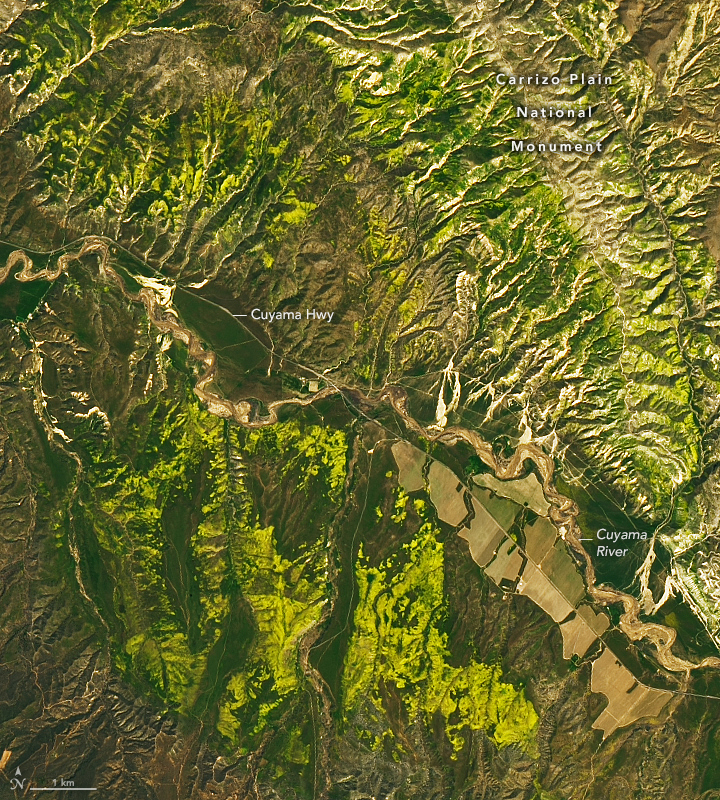


A deluge of winter snow and rain in Southern California produced plenty of flooding in 2023. But as winter turned to spring, the abundance of water also helped provoke a flood of something else across the region’s normally arid open spaces—wildflowers.
The seasonal spectacle was visible from space. The images above, acquired by the Operational Land Imager-2 (OLI-2) on Landsat 9, show the desert blooming in Carrizo Plain National Monument on April 6, 2023. Compared to an image taken in April 2022, the area is considerably greener and more colorful.
The Theodore Payne Foundation for Wild Flowers & Native Plants, a non-profit organization based in Los Angeles, publishes weekly updates about the status of wildflower blooms in the region. During a large bloom in Carrizo Plain in 2019, the organization described a typical scene: “There are currents of goldfields (Lasthenia californica) and splashes of blue valley phacelia (Phacelia ciliate) bobbing around in the yellow sea, while the smaller tidy tips (Layia platyglossa) try to find an island of soil not filled with taller flowers....Desert candle (Caulanthus inflatus) can be found sprinkled about as well. The recommended viewing spots for all of this colorful bloom is along Soda Lake Road.”
Large wildflower blooms—often called “superblooms”—occur sporadically in southern California. By tracking online media coverage of wildflower blooms and comparing the reports with rainfall patterns, University of California ecologists counted 10 separate superblooms in the nearby Anza-Borrego Desert over four decades. Nine of the 10 blooms occurred after winters when precipitation was higher than average.
NASA Earth Observatory images by Lauren Dauphin, using Landsat data from the U.S. Geological Survey. Story by Adam Voiland.